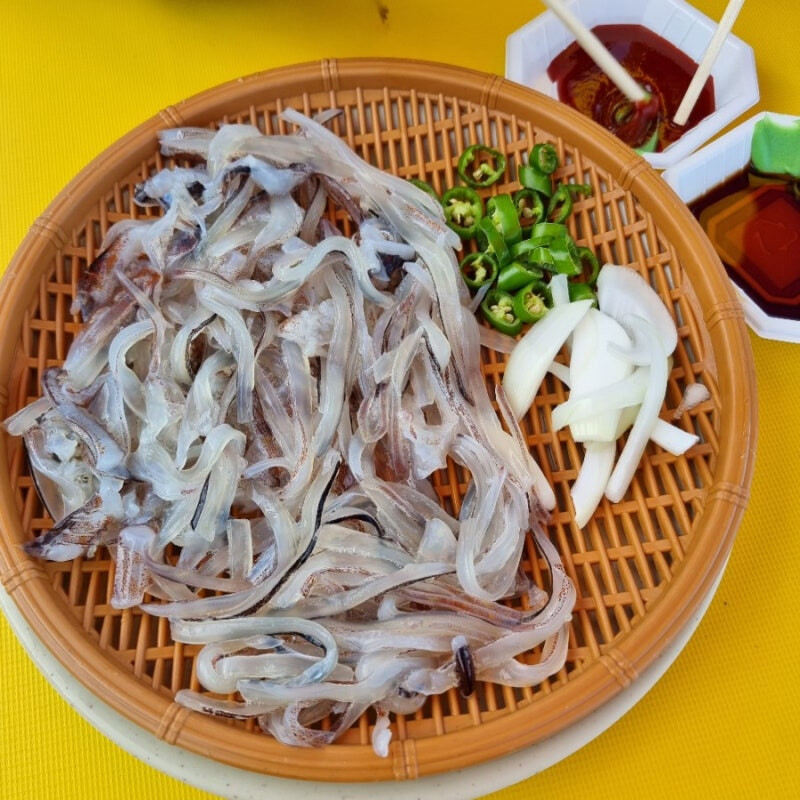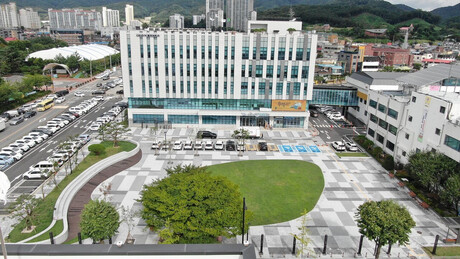
The return of squid to Korea's East Coast has brought much-needed vibrancy to local businesses. After a long fishing ban, abundant catches have eased the worries of fishermen, and tourists are flocking to the area.
Squid Catches Surge After Fishing Ban Lifted
According to the Gangwon Province Global Headquarters, squid catches on the East Coast of Gangwon amounted to 31 tons last week (May 21-27), just under a month since the squid fishing ban (April 1-30) was lifted. This is approximately a threefold increase compared to the previous week (11 tons), raising expectations for the recovery of squid resources. Notably, fishing boats from Gangneung, home to Jumunjin Port, known as a "squid mecca," accounted for 23 tons of this haul, leading the squid boom.
This brings the cumulative squid catch for the year to 95 tons, an increase from 88 tons during the same period last year, bringing smiles to the faces of fishermen. East Coast fishermen, including those operating jigging boats, have generated 728 million won in revenue from squid, injecting vitality into the stagnant local economy. This offers significant relief to fishermen who have struggled in recent years due to declining squid catches.
Squid Prices Stabilizing... Reducing Consumer Burden
Along with the increase in squid catches, auction prices are also showing stability. During the same period, the auction price for grade 1 live squid (approx. 3 kg, equivalent to 20 squid) ranged from a high of 225,000 won to a low of 26,000 won. This indicates that abundant supply is positively influencing price stability. Compared to last year, the price per squid has decreased, which is expected to reduce the burden on consumers and further stimulate squid consumption.
Sokcho Squid Nanjeon 'Buzzing' for the First Time in a While
The return of squid has particularly revitalized Sokcho's representative pojangmacha (street food stall) village, "Squid Nanjeon." On Friday evening, the previous day, the Squid Nanjeon was bustling with office workers and tourists, a sight not seen in a long time. They happily ordered various squid dishes, including squid sashimi, spicy cold squid soup (ojingeo mulhoe), and stuffed squid (ojingeo sundae), enjoying their time. At Squid Nanjeon, one can enjoy a squid for 8,000 won, and there was high satisfaction with the more affordable prices compared to previous years.
Mr. Choi (40, Gyeonggi), who visited Squid Nanjeon, remarked, "I remember squid costing over 10,000 won per squid when I visited the East Coast last year, so it seems cheaper than I thought." He added, "It feels great to enjoy squid sashimi while looking at the Sokcho sea after a long time." This highlights how the drop in squid prices is positively impacting tourist inflow.
Significance and Future Outlook of Squid Catch Recovery
The recent news of increased squid catches holds multi-layered significance, extending beyond just increased income for fishermen, encompassing the recovery of marine ecosystem health and regional economic revitalization.
A Signal from the Marine Ecosystem
Squid are an important species in the East Coast marine ecosystem. An abundance of squid can be interpreted as a positive sign that the marine environment is becoming healthy again. Considering the serious concerns raised by the sharp decline in squid catches due to climate change and overfishing, this recovery is very welcome news. However, efforts must continue to maintain sustainable catches rather than settling for a short-term recovery. For this, cooperation between the government and fishermen to protect fish stocks, along with the establishment of scientific catch management plans, is essential.
A Catalyst for Regional Economic Revitalization
Squid are a crucial pillar of the economy in the Gangwon East Coast region. An increase in squid catches not only boosts fishermen's income but also positively impacts related industries such as processing, distribution, and restaurant businesses, injecting vitality into the local economy. In particular, the revitalization of tourist attractions like Squid Nanjeon leads to tourist inflow, contributing to increased sales for local businesses. Furthermore, the development of various processed food products utilizing squid and linking them with tourism products will create new added value for the regional economy.
Analysis of the Abundant Squid Harvest
Several analyses are emerging regarding the reasons behind this abundant squid harvest. The biggest factors cited are the establishment of the fishing ban and changes in the marine environment. Since squid are a short-lived species, setting a fishing ban in April, when their spawning season begins, is believed to have helped the growth of young squid and contributed to resource recovery. Additionally, oceanographic factors such as changes in water temperature and ocean currents along the East Coast also appear to have positively influenced squid catches. Squid prefer relatively warm waters, and the distribution of their prey also affects their migration routes and habitats. According to research by the National Institute of Fisheries Science, there have also been reports of increased plankton density, which is a food source for squid, in specific areas of the East Sea recently.
Challenges for Sustainable Fishing
Even amidst the positive trend of recovering squid catches, challenges for sustainable fishing remain. Strengthening crackdowns on illegal fishing, efforts to reduce bycatch, and the voluntary participation of fishermen in resource management are paramount. Furthermore, continuous monitoring and research on marine ecosystem changes due to climate change are necessary to improve predictability regarding squid resource fluctuations and establish a system for proactive response. In the long term, securing a stable supply through the development of squid aquaculture technology can also be considered.
Investment for the Future
This year's abundant squid harvest has brought new hope to the East Coast fishery. However, it's crucial not to be complacent with short-term results and to continue investing in the future. Through diversified efforts such as strengthening fisherman education programs, introducing eco-friendly fishing technologies, and establishing marketing strategies to promote seafood consumption, the East Coast squid industry must continue to develop and contribute to the regional economy. With expectations for the returned squid to the East Coast, now is the time for wise efforts towards sustainable development.
[Copyright (c) Global Economic Times. All Rights Reserved.]





























